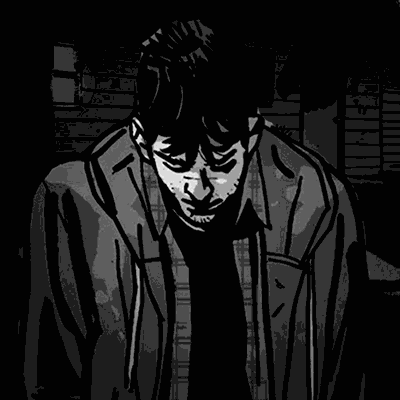
Translating a comic book into a TV show is a daunting process, one Robert Kirkman discussed right here on OutcastCinemax.com. And in that same vein, there are further questions: How do you translate a character? More specifically: Who will Outcast’s hero Kyle Barnes shape up to be off the page?
For answers, OutcastCinemax.com caught up with Patrick Fugit, who plays the leading role, to talk about his character. Fugit says Kyle is a mix of “light and dark”—a modern exorcist, if you will, sans religiosity. Read on for even more about the shifts from page to screen and the development of a living, breathing Kyle Barnes.
How did you use the Outcast comic books to develop Kyle Barnes for the screen?
At the point when I auditioned, there were five issues out. So I went and read those. But aside from the physicality and tone that [comic book artist] Paul Azaceta works into the comic, most of what I got was from [series creator and comic book author] Robert Kirkman’s writing. Mostly, it was me asking him questions during the pilot to tune the direction we wanted to go with Kyle.
Regarding your “tuning” of Kyle, how did you want to portray the character?
The character and the subject matter in Outcast can be pretty dark. I like things that are dark, but I also like to see a bit of brightness in there. If you see somebody that you can empathize with and care about, then what’s going on with the character means more. And I think that’s more interesting than just a sort of flat depressive, dark character.
How did you create a dark character that audiences can still empathize with?
I think that Kyle has a very bright soul, if you will. He wants to have these—I call them—beacons of light around him, like his wife and his sister and his daughter. And during the pilot he’s afraid to let those things around him because he thinks there’s something wrong with him. I think once he figures out that there’s something going on and it has to do with him, then he figures, Maybe there’s something I can do to fix things.
Kirkman has talked about reinterpreting the exorcism genre with Outcast. How will Kyle reimagine the exorcist figure?
I don’t think he’s immediately out to help people. Early on, we make it pretty clear that his mother was possessed. In the pilot, Kyle and Reverend Anderson talk a little bit about it—Reverend Anderson calls it possession while Kyle calls it mental illness. And so him being there in the first place—he’s not there from a position of exorcism. He shows up to find some answers for himself, but he’s discovering that this is a more real situation for him and the Reverend than either of them ever expected.
Should fans of the comic books prepare themselves for divergences—for your character and the story as a whole—in the series?
Robert’s writing was so good that we actually had a fairly consistent view of Kyle from the beginning. I think our goal is to remain pretty faithful to the skeleton that the comic gives us. But we have a lot more time to go through a lot more material in the show, just because we’re shooting hour-long episodes. There’s just more to the world and to the ensemble in a way that I think is very interesting. Sometimes in shows people will pack on additional subplots to fill time or whatever, but these feel very connected. And they’re very creepy.
By Eleanor Laurence/Cinemax